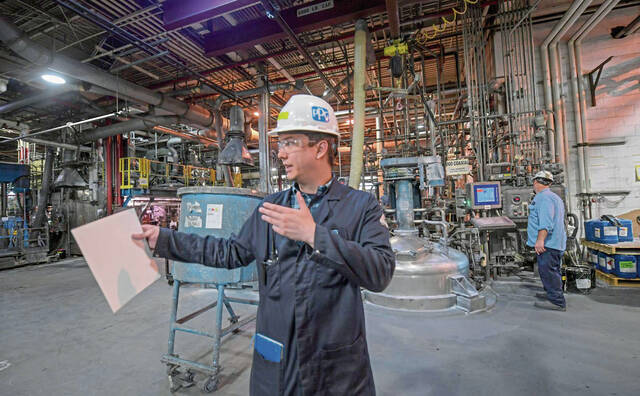Zach Chow: Building the manufacturing workforce of tomorrow
In honor of Manufacturing Day, Oct. 4, thousands of manufacturers across the country are hosting events in early October to teach students and educators about the realities of working in modern manufacturing, from how plants operate to high-tech career paths. Organized by the Manufacturing Institute, the initiative aims to attract and inspire the next generation of skilled manufacturing workers by raising awareness of the diverse opportunities available in the industry. As the demand for domestic manufacturing capabilities continues to grow, building the talent pipeline is essential to support economic resiliency and innovation.
Manufacturing enables our way of life, producing the goods that we use every day, including medicines, cars and smartphones. After the covid-19 pandemic exposed the vulnerability of complex global supply chains, government legislation and investments from the private sector have led to the steady growth of the manufacturing industry in the U.S. According to the National Association of Manufacturers (NAM), the industry currently employs more than 13 million workers with an additional 500,000 open positions as of June 2024. It is estimated that up to 3.8 million new manufacturing jobs will be needed by 2034.
In addition to creating jobs, the manufacturing industry conducts more than half of all private sector research and development, leading technology development in pharmaceuticals, semiconductor and electrical components and computer and electronic manufacturing. Government-funded grants and tax incentives such as the Creating Helpful Incentives to Produce Semiconductors and Science Act and the Inflation Reduction Act have allocated billions of dollars to bolster next-generation manufacturing programs in semiconductor research and clean energy production.
In this growing market, persistent workforce challenges have motivated manufacturers to find new ways to attract job applicants and retain existing employees. Strong wages and attractive benefits packages are designed to support workers in their manufacturing careers. Over 90% of manufacturing employees are eligible for employer sponsored health benefits, significantly higher than the national average of 79%.
Employee retention efforts include flexible work arrangements, such as split shifts, and a variety of training opportunities. Training programs address new digital technologies and interpersonal skills in the form of online education platforms, virtual reality simulations, apprenticeships and tuition reimbursement.
Manufacturers are also working to expand their talent pools with workforce development initiatives focused on diversity and inclusion. In a talent study conducted by Deloitte and the Manufacturing Institute, over 90% of manufacturers surveyed said they were forming partnerships with educational institutions, industry associations or community organizations to connect with populations including women, people of color, veterans and immigrants.
Many manufacturers, including PPG, are also investing in science, technology, engineering and mathematics (STEM) education and workforce development programs. We believe it is imperative to teach students and communities about the career options and advancement opportunities available in the manufacturing industry, from entry-level operators to plant managers and engineers.
Manufacturing is a vital part of a strong workforce and our national economy. Technological shifts such as digitalization and automation have changed many aspects of manufacturing, but they have also created new types of positions. Manufacturers like PPG are driving the next wave of advancements that will transform production processes and advance innovative thinking, and this forward progress is made possible by hiring and training the manufacturing workforce of the future.
Zach Chow is the plant manager at PPG’s Springdale facility.
Remove the ads from your TribLIVE reading experience but still support the journalists who create the content with TribLIVE Ad-Free.

